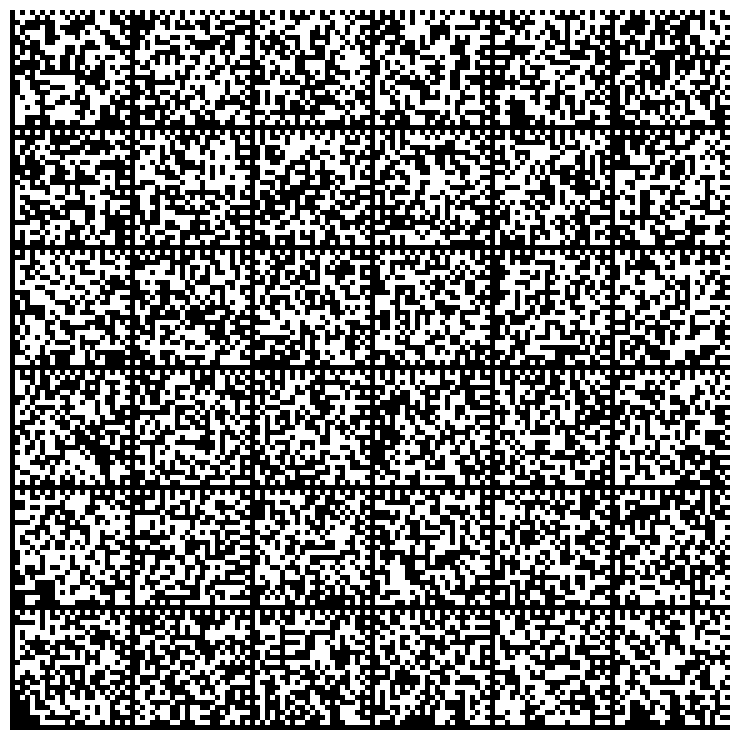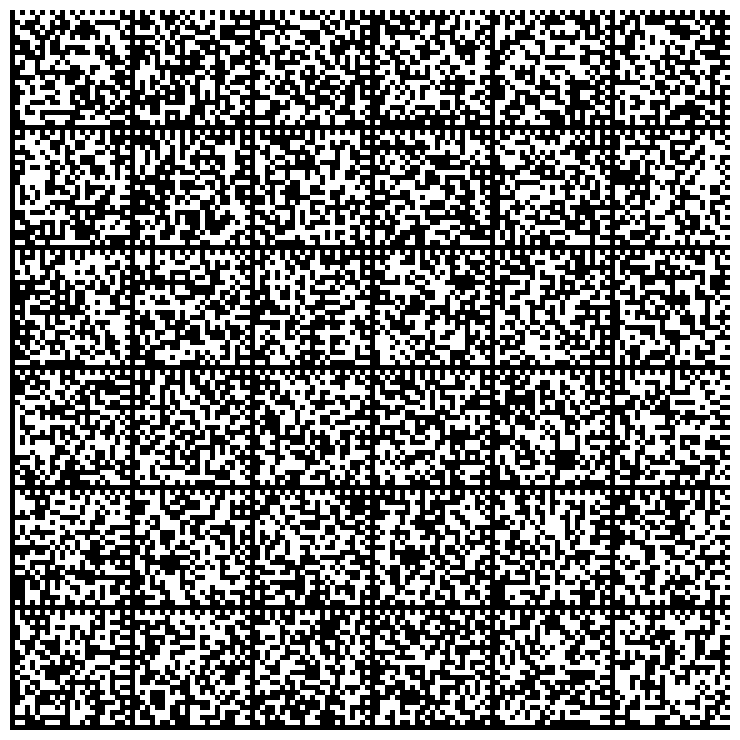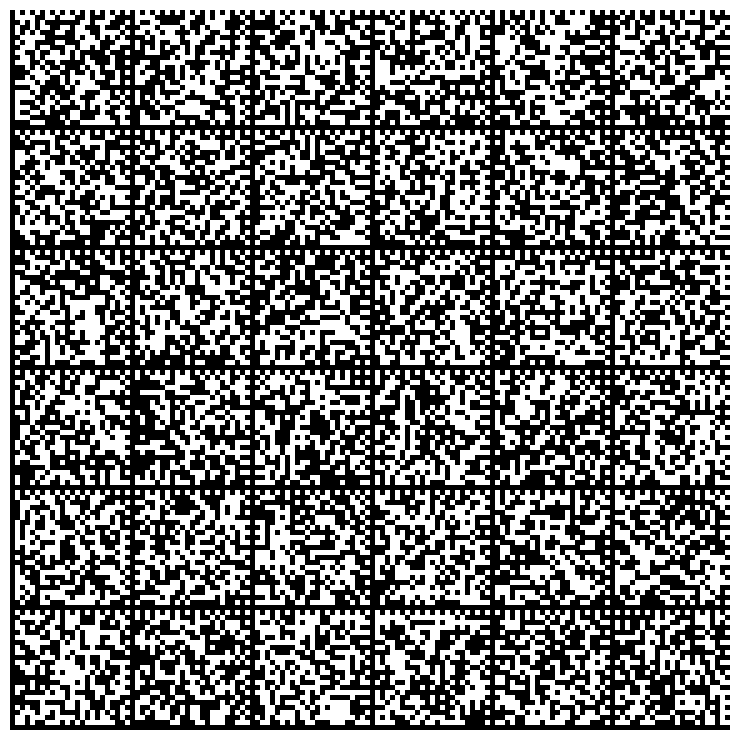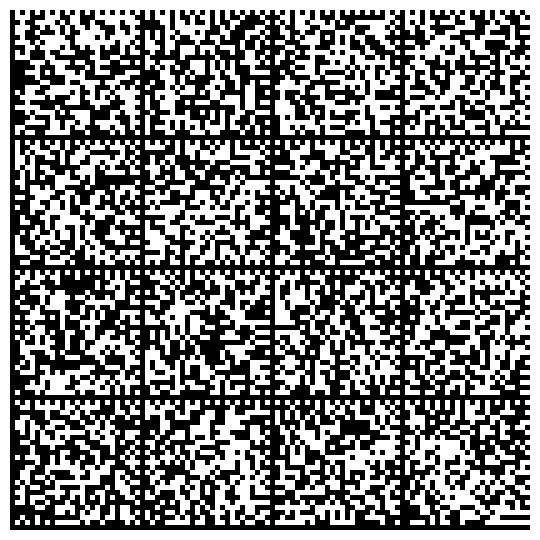dbeurive / gpg
This package contains the implementation of a simple GPG wrapper
Installs: 12 372
Dependents: 0
Suggesters: 0
Security: 0
Stars: 8
Watchers: 1
Forks: 5
Open Issues: 0
pkg:composer/dbeurive/gpg
Requires (Dev)
- phpunit/phpunit: >=5.5.0
This package is not auto-updated.
Last update: 2025-12-01 20:36:19 UTC
README
- Introduction
- License
- Installation
- Synopsis
- Signing a document (using the private key)
- Clear signing a document (using the private key)
- Creating a detached signature (using the private key)
- Encrypting a document (using a public key)
- Decrypt a encrypted file
- Key management
- Other methods
- Testing the package
- Creating printed backups of private keys
- Regenerate keys from their graphical representations
- Useful links
Introduction
This package implements a wrapper around the PGP command line tool.
Please note that the ambition of this wrapper is not to be "complete". This wrapper has been developed in order to automat the GPG processing of a large number of files. Therefore, only the basic GPG functionalities have been wrapped (signing, encryption, decryption and signature verification).
License
This code is published under the following license:
Creative Common Attribution-NonCommercial 4.0 International (CC BY-NC 4.0)
See the file LICENSE.TXT
Installation
From the command line:
composer require dbeurive/gpg
Or, from within the file composer.json:
"require": {
"dbeurive/gpg": "*"
}
Synopsis
// Get the fingerprint of a key. $fgp = Gpg::getPublicKeyFingerPrint('protected key'); $fgp = Gpg::getPrivateKeyFingerPrint('protected key'); // Remove a key from the keyring. Gpg::removePublicKey($fgp); Gpg::removePrivateKey($fgp); // Import a key into the keyring. Gpg::importPublicKey('open.pub'); Gpg::importPrivateKey('open.prv'); // Check that a key is in the keyring. Gpg::isPublicKeyPresent($fgp); Gpg::isPrivateKeyPresent($fgp); // Sign (encrypt with a private key). Gpg::signFile('/path/to/document', $fgp, 'my password (if any), or null', '/path/to/encrypted_file'); Gpg::signFile('/path/to/document', $fgp, null, '/path/to/encrypted_file'); Gpg::signString('AZERTY', $fgp, 'my password (if any), or null', '/path/to/encrypted_file'); Gpg::signString('AZERTY', $fgp, null, '/path/to/encrypted_file'); $encryptedString = Gpg::signFile('/path/to/document', $fgp, 'my password (if any), or null', null); $encryptedString = Gpg::signFile('/path/to/document', $fgp, null, null); $encryptedString = Gpg::signString('AZERTY', $fgp, 'my password (if any), or null', null); $encryptedString = Gpg::signString('AZERTY', $fgp, null, null); // Clear sign Gpg::clearSignFile('/path/to/document', $fgp, 'my password (if any), or null', '/path/to/signed_document'); Gpg::clearSignFile('/path/to/document', $fgp, null, '/path/to/signed_document'); Gpg::clearSignString('AZERTY', $fgp, 'my password (if any), or null', '/path/to/signed_document'); Gpg::clearSignString('AZERTY', $fgp, null, '/path/to/signed_document'); $signedDocument = Gpg::clearSignFile('/path/to/document', $fgp, 'my password (if any), or null', null); $signedDocument = Gpg::clearSignFile('/path/to/document', $fgp, null, null); $signedDocument = Gpg::clearSignString('AZERTY', $fgp, 'my password (if any), or null', null); $signedDocument = Gpg::clearSignString('AZERTY', $fgp, null, null); // Detach sign Gpg::detachSignFile('/path/to/document', $fgp, 'my password (if any), or null', '/path/to/signature'); Gpg::detachSignFile('/path/to/document', $fgp, null, '/path/to/signature'); Gpg::detachSignString('AZERTY', $fgp, 'my password (if any), or null', '/path/to/signature'); Gpg::detachSignString('AZERTY', $fgp, null, '/path/to/signature'); $signature = Gpg::detachSignFile('/path/to/document', $fgp, 'my password (if any), or null', null); $signature = Gpg::detachSignFile('/path/to/document', $fgp, null, null); $signature = Gpg::detachSignString('AZERTY', $fgp, 'my password (if any), or null', null); $signature = Gpg::detachSignString('AZERTY', $fgp, null, null); // Verify a "clear" signature (that is: a file that contains the document and it signature) $warning = null; $status = Gpg::verifyClearSignedFile('/path/to/signed_document', $warning); // true: valid signature, false: invalid signature. $status = Gpg::verifyClearSignedString($signature, $warning); // true: valid signature, false: invalid signature. // Verify a "detached" signature (against a document) $warning = null; $status = Gpg::verifyDetachedSignedFile('/path/to/signature', '/path/to/document', $warning); $status = Gpg::verifyDetachedSignedString($signature, '/path/to/document', $warning); // Encrypt with a public key Gpg::encryptAsymmetricFile('/path/to/document', $fgp, '/path/to/encrypted_file'); Gpg::encryptAsymmetricString('AZERTY', $fgp, '/path/to/encrypted_file'); $encryptedString = Gpg::encryptAsymmetricFile('AZERTY', $fgp, null); $encryptedString = Gpg::encryptAsymmetricString('AZERTY', $fgp, null); // Decrypt a document Gpg::decryptFile('/path/to/encrypted_file', 'my password (if any), or null', '/path/to/decrypted_file'); Gpg::decryptFile('/path/to/encrypted_file', null, '/path/to/decrypted_file'); Gpg::decryptString($encryptedString, 'my password (if any), or null', '/path/to/decrypted_file'); Gpg::decryptString($encryptedString, null, '/path/to/decrypted_file'); $decryptedString = Gpg::decryptFile('/path/to/encrypted_file', 'my password (if any), or null', null); $decryptedString = Gpg::decryptFile('/path/to/encrypted_file', null, null); $decryptedString = Gpg::decryptString($encryptedString, 'my password (if any), or null', null); $decryptedString = Gpg::decryptString($encryptedString, null, null);
For a detailed description of the return codes, please consult this file.
Signing a document (using the private key)
To sign a document means: encrypt the document using the private key.
Command line
Command:
gpg --armor -u 03DEC874738344206A1A7D31E07D9D14954C8DC5 --output document.pgp --sign document
# For automation inside a script:
exec 3> /tmp/status; echo 'password' | gpg --batch --yes --always-trust --status-fd 3 --passphrase-fd 0 --armor -u 03DEC874738344206A1A7D31E07D9D14954C8DC5 --output document.pgp --sign document; echo $?; exec 3>&-
Then to decrypt the document (using the public key)
gpg --output document.decrypted --decrypt document.pgp
gpg --output - --decrypt document.pgp
Please note that you can use the sub key associated to the private key instead of the private key itself.
API
Sign:
static function signFile($inAPath, $inPrivateKeyFingerPrint, $inOptPassword=null, $inOptSignaturePath=null)
static function signString($inString, $inPrivateKeyFingerPrint, $inPassword=null, $inOptSignaturePath=null)
Decrypt:
static function decryptFile($inAbsolutePath, $inOptPassword=null, $inOptOutputFile=null)
static function decryptString($inString, $inOptPassword=null, $inOptOutputFile=null)
Clear signing a document (using the private key)
To "clear sign" a document means:
- generate a hash of the document (using SHA1, for example).
- encrypt the previously generated hash with the private key.
- append the encrypted hash to the end of the document (which remains clear).
Command line
Command:
gpg --armor -u 03DEC874738344206A1A7D31E07D9D14954C8DC5 --output document.pgp --clearsign document
# For automation inside a script:
exec 3> /tmp/status; echo 'password' | gpg --batch --yes --always-trust --status-fd 3 --passphrase-fd 0 --armor -u 03DEC874738344206A1A7D31E07D9D14954C8DC5 --output document.pgp --clearsign document; echo $?; exec 3>&-
Verify the signature:
gpg --verify document.pgp
API
Sign:
static function clearSignFile($inPath, $inPrivateKeyFingerPrint, $inOptPassword=null, $inOptSignaturePath=null)
static function clearSignString($inString, $inPrivateKeyFingerPrint, $inPassword=null, $inOptSignaturePath=null)
Verify the signature:
static function verifyClearSignedFile($inFilePath, &$outWarning)
static function verifyClearSignedString($inString, &$outWarning) {
Creating a detached signature (using the private key)
Creating a "detached signature" means:
- generate a hash of the document (using SHA1, for example).
- encrypt the previously generated hash with the private key.
- write the encrypted hash in a (specified) file.
Please note that a "detached signature" and a "clear signature" are identical. The difference between a "detached signature" and a "clear signature" is that the former is put into a separate file, whereas the latter is appended to the end of the signed document.
Command line
Command:
gpg --armor -u 03DEC874738344206A1A7D31E07D9D14954C8DC5 --output document.PGP --detach-sign document
# For automation inside a script:
exec 3> /tmp/status; echo 'password' | gpg --batch --yes --always-trust --status-fd 3 --passphrase-fd 0 --armor -u 03DEC874738344206A1A7D31E07D9D14954C8DC5 --output document.pgp --detach-sign document; echo $?; exec 3>&-
Verify the signature:
gpg --verify document.pgp document
API
Sign:
static function detachSignFile($inPath, $inPrivateKeyFingerPrint, $inOptPassword=null, $inOptSignaturePath=null)
static function detachSignString($inString, $inPrivateKeyFingerPrint, $inPassword=null, $inOptSignaturePath=null)
Verify a signature:
static function verifyDetachedSignedFile($inSignatureFilePath, $inDocument, &$outWarning)
static function verifyDetachedSignedString($inSignature, $inDocument, &$outWarning)
Encrypting a document (using a public key)
Please note that in GPG lingo, encryption using a private key is called "signing" (which, technically speaking, is an encryption).
Command line
Command:
gpg --armor --output encrypted_file --encrypt --recipient 03DEC874738344206A1A7D31E07D9D14954C8DC5 document
# For automation inside a script:
exec 3> /tmp/status; gpg --batch --yes --status-fd 3 --always-trust --armor --output document.pgp --encrypt --recipient 03DEC874738344206A1A7D31E07D9D14954C8DC5 document; echo $?; exec 3>&-
Decrypt the file (using a private key):
gpg --output document --decrypt document.pgp
API
static function encryptAsymmetricFile($inInputPath, $inPublicKeyFingerPrint, $inOptOutputFile=null)
static function encryptAsymmetricString($inString, $inPublicKeyFingerPrint, $inOptOutputFile=null)
Decrypt a encrypted file
Please note that the document may have been encrypted using a public key or a secret key (that is, signed).
- If the document has been encrypted with a public key (probably yours), you will need a private key to decrypt it.
- If the document has been signed with a private key, you will need a public key to decrypt it.
Command line
Command:
gpg --output document --decrypt document.pgp
For automation inside a script:
exec 3> /tmp/status; echo 'password' | gpg --batch --yes --status-fd 3 --passphrase-fd 0 --always-trust --output document --decrypt document.pgp; echo $?; exec 3>&-
API
static function decryptFile($inAbsolutePath, $inOptPassword=null, $inOptOutputFile=null)
static function decryptString($inString, $inOptPassword=null, $inOptOutputFile=null)
Key management
Except when calling the methods that returns the fingerprints (getPublicKeyFingerPrint and getPrivateKeyFingerPrint), the keys are identified by their fingerprints
This ensures maximum security against "side effects" that may occur when specifying keys' IDs.
API
static function getPublicKeyFingerPrint($inPublicKey)
static function getPrivateKeyFingerPrint($inPrivateKey)
static function isPrivateKeyPresent($inPrivateKeyFingerPrint)
static function isPublicKeyPresent($inPublicKeyFingerPrint)
static function removePrivateKey($inPrivateKeyFingerPrint)
static function removePublicKey($inPublicKeyFingerPrint)
static function importPrivateKey($inPrivateKeyPath)
static function importPublicKey($inPublicKeyPath)
Other methods
static function version()
static function checkVersion()
Testing the package
This package contains two pairs of keys:
- One pair which secret key is protected by a password.
- One pair which secret key is not protected.
These keys are located in the directory tests/data:
open.prv/open.pub: this pair of keys is not protected.protected.prv/protected.pub: this pair of keys is protected.
Importing these keys
cd tests/data
gpg --import open.prv; gpg --import open.pub; gpg --import protected.prv; gpg --import protected.pub
Getting IDs and fingerprints
For public keys:
gpg --batch --list-keys --fingerprint --with-colon
For private keys:
gpg --batch --list-secret-keys --fingerprint --with-colon
See this document for a detailed description of the output of the option
--with-colon.
The Perl script list-keys.pl may be used to print the list of public keys.
gpg --list-keys --with-colon --fingerprint | perl list-keys.pl
gpg --list-secret-keys --with-colon --fingerprint | perl list-keys.pl
Example:
gpg --list-secret-keys --with-colon --fingerprint | perl list-keys.pl
Outputs:
6 sec E07D9D14954C8DC5 03DEC874738344206A1A7D31E07D9D14954C8DC5 0C185D728E760EC0 open key <ok@test.com>
6 sec 29A778386005B911 881C41F8B8FD138E86E7230929A778386005B911 6A492A01B27F4819 protected key <pk@test.com>
Whith:
Column 1: the total number of columns for the current line.
Column 2: the type of key (pub: public, sec: secret).
Column 3: the UID of the key.
Column 4: the fingerprint of the key.
Column 5: the UID of the associated sub key.
Column 6: the ID of the key.
Please note that
- the last field of each line may have spaces (ex:
PHP coder <php_coder@php.com>). - a key may have more than one sub key. Therefore, a line may have more than 6 columns.
Creating printed backups of private keys
You can produce graphical representations of your private keys. These representations can be printed on paper.
Please note that you should not need to produce graphical representations of your public keys. Indeed, public keys do not need to be protected. Therefore you can make copies of your public keys everywhere.
Install Data Matrix tools:
$ sudo apt-get install dmtx-utils
Generate a very long RSA keys:
$ cat -n batch.txt
1 %echo Generating a basic OpenPGP key
2 Key-Type: RSA
3 Key-Length: 8192
4 Subkey-Type: RSA
5 Subkey-Length: 8192
6 Name-Real: Tester Long
7 Name-Comment: This is for testing
8 Name-Email: joe-long@foo.bar
9 Expire-Date: 0
10 Passphrase: abc
11 # Do a commit here, so that we can later print "done" :-)
12 %commit
13 %echo done
$ cat batch.txt | gpg --enable-large-rsa --batch --gen-key
Find the ID or the fingerprint of the generated keys:
By ID:
$ gpg --list-keys sec 8192R/9BEF3AAC 2016-12-30 uid Tester Long (This is for testing) <joe-long@foo.bar> ssb 8192R/3A57FB1C 2016-12-30 $ gpg --export 9BEF3AAC > very-long-key.pub $ gpg --export-secret-key 9BEF3AAC > very-long-key.prv
By fingerprint:
$ gpg --list-keys --fingerprint --with-colons
pub:-:8192:1:FB9F45539BEF3AAC:2016-12-30:::-:Tester Long (This is for testing) <joe-long@foo.bar>::escaESCA:
fpr:::::::::1335EF5C02BEF36A56DBA451FB9F45539BEF3AAC:
sub:-:8192:1:1D4050C33A57FB1C:2016-12-30::::::esa:
Then generate images that represent the private key:
$ gpg --export-secret-key 9BEF3AAC | paperkey --output-type raw | split -b 1500 - key- # Or: # gpg --export-secret-key 1335EF5C02BEF36A56DBA451FB9F45539BEF3AAC | paperkey --output-type raw | split -b 1500 - key- $ cat -n gen-images.sh 1 #!/bin/bash 2 3 for K in key-*; do 4 dmtxwrite -e 8 $K > $K.png 5 done $ ./gen-images.sh $ ls -1 *.png key-aa.png key-ab.png key-ac.png key-ad.png
The list of images that represents the private key is:
Regenerate keys from their graphical representations
$ cat -n gen-key.sh
1 #!/bin/bash
2
3 rm -f key.prv
4 for K in key-*.png; do
5 echo $K
6 dmtxread $K >> key.prv
7 done
$ ./gen-key.sh
$ paperkey --pubring ~/.gnupg/pubring.gpg --secrets key.prv > restore.raw
# Or:
# paperkey --pubring very-long-key.pub --secrets key.prv > restore.raw
Please note that you need the public key in order to regenerate the private key! The public key can be stored within the public keyring, or within a file.
Compare the restored key against the original:
$ gpg --list-packets restore.raw > f1 $ gpg --list-packets very-long-key.prv > f2 $ diff f1 f2
If you try to import the restored private key:
$ gpg --import restore.raw
gpg: key 9BEF3AAC: already in secret keyring
gpg: Total number processed: 1
gpg: secret keys read: 1
gpg: secret keys unchanged: 1
Sign a document with the original private key:
$ gpg -u 9BEF3AAC --sign gen-key.sh
Remove the original private key from its keyring:
$ gpg --delete-secret-keys 9BEF3AAC
Restore the secret key using the backup:
$ gpg --import restore.raw
gpg: key 9BEF3AAC: secret key imported
gpg: key 9BEF3AAC: "Tester Long (This is for testing) <joe-long@foo.bar>" not changed
gpg: Total number processed: 1
gpg: unchanged: 1
gpg: secret keys read: 1
gpg: secret keys imported: 1
Then, make sure that the restored secret key works as expected:
$ gpg --output script.sh --decrypt gen-key.sh.gpg
$ diff gen-key.sh script.sh
Useful links
https://www.void.gr/kargig/blog/2013/12/02/creating-a-new-gpg-key-with-subkeys/




